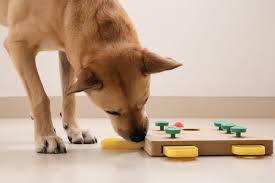Dogs are more than just pets—they are loyal companions, protectors, and members of the family. From their physical needs to emotional well-being, modern pet owners are more invested than ever in understanding how to provide a life that’s both enriching and healthy. And while every dog has its own personality, the world of canine care has seen some fascinating trends that help us better understand what our dogs need to thrive.
Using nationwide statistics and insights from veterinarians and behaviorists, this blog takes a closer look at the habits, health, and everyday life of dogs in America. Whether you’re a long-time dog parent or a new puppy owner, this deep dive into canine care offers useful, science-based information about how our furry friends live—and what we can do to make their lives better.
How Dogs Are Living Longer, Healthier Lives
In recent years, dogs have been living longer than ever before, thanks to better access to veterinary care, improved nutrition, and a growing focus on preventive health. According to the American Veterinary Medical Association, the average lifespan of a dog in the U.S. today ranges from 10 to 13 years, with small breeds often living longer than large ones.
Senior dogs now make up over 40% of the dog population, which means more people are adjusting routines to meet the needs of aging pets. This includes making mobility accommodations, adjusting diets, and keeping up with regular wellness checks. Older dogs benefit from routine exercise, shorter walks, low-impact playtime, and environments that support joint health and comfort.
Understanding the normal signs of aging—like slower movement, greying fur, and changes in behavior—helps dog owners support their pets through every life stage.
Exercise: Still the Most Underrated Medicine
It may sound simple, but daily physical activity is one of the most important things a dog needs. While every breed has different requirements, dogs need regular exercise to stay fit, happy, and mentally stimulated.
According to the Association for Pet Obesity Prevention, over 56% of dogs in the U.S. are considered overweight or obese. This can lead to a range of health problems, including arthritis, diabetes, and cardiovascular issues. But beyond physical health, lack of exercise also contributes to behavioral problems. Boredom can result in chewing, digging, barking, and even signs of depression in dogs.
A daily walk, time at a dog daycare, or off-leash play in a safe environment gives dogs a valuable outlet for energy. Mental exercise—such as puzzle toys, scent games, or basic training—also helps reduce anxiety and reinforce good behavior.
Canine Communication: What Behavior Tells Us
Dogs may not speak our language, but they communicate constantly through body language, posture, and vocalizations. A wagging tail doesn’t always mean a dog is happy—tail height, speed, and direction all play a role in interpretation. Similarly, yawning can be a sign of stress, not just tiredness.
Behavioral issues like barking, chewing, and leash reactivity are often rooted in unmet needs or poor socialization. Studies show that over 70% of dogs display some form of anxiety, whether it’s separation anxiety, noise phobias, or fear-based aggression.
Early socialization, consistency, and positive reinforcement go a long way in helping dogs become confident and well-adjusted. Even adult dogs benefit from structured environments where they can safely interact with other dogs and humans. Daycare settings, obedience classes, and routine playdates all support behavioral development.
Why Routine Matters in a Dog’s Life
Dogs thrive on structure. Having a predictable routine—regular mealtimes, consistent potty breaks, and dedicated playtime—gives dogs a sense of security. This is especially important for young puppies and rescue dogs adjusting to a new environment.
Changes in routine, such as a move or a new work schedule, can stress dogs out. Common symptoms of stress include pacing, panting, whining, and changes in eating habits. Keeping a regular rhythm, even while traveling or boarding, helps dogs stay calm and confident. That’s why many boarding and daycare facilities follow structured schedules that mimic the routines dogs are used to at home.
The Science of Play: It’s More Than Just Fun
Play isn’t just a luxury—it’s essential to a dog’s development and emotional health. According to canine behaviorists, dogs that engage in regular social play show better emotional regulation, improved problem-solving skills, and lower stress levels.
Interactive play (like tug-of-war or fetch) helps strengthen the human-animal bond, while social play (with other dogs) reinforces communication skills and reduces aggression. Playtime also provides an important outlet for natural instincts such as chasing, chewing, and exploring.
Interestingly, studies show that dogs who lack regular opportunities for play are more likely to develop compulsive behaviors and fear responses. That’s one reason why doggy daycare and group play sessions have become more popular—they offer a supervised way for dogs to socialize safely and burn off energy.
Grooming and Hygiene Habits: Clean Dog, Happy Dog
A clean dog isn’t just more pleasant to be around—it’s healthier, too. Grooming goes beyond a good-looking coat. It also plays a key role in identifying issues like skin infections, ticks, fleas, and hot spots.
According to recent surveys, 65% of dog owners groom their pets at least once a month, while 35% use professional grooming services regularly. Dogs with longer or double coats may require brushing every few days to prevent mats and reduce shedding.
Bathing frequency depends on the dog’s coat type, skin condition, and lifestyle. Dogs who play outside regularly or attend daycare may need more frequent baths. Nail trimming, ear cleaning, and dental care are also part of a good hygiene routine.
Neglecting grooming can lead to discomfort, infections, and even behavioral changes due to chronic irritation or pain. Establishing a grooming routine early in a dog’s life makes it easier and less stressful for everyone involved.
The Importance of Rest and a Safe Space
Just like humans, dogs need adequate sleep to stay healthy. The average adult dog sleeps 12 to 14 hours per day, while puppies can sleep up to 20 hours daily. Rest supports immune function, mood regulation, and cognitive performance.
Dogs also need a secure, calm space where they can relax. Whether it’s a cozy crate, a quiet corner, or a designated dog bed, having a personal retreat reduces anxiety and provides comfort—especially in multi-pet households or busy homes.
This principle extends to boarding environments too. Dogs who stay in daycare or overnight facilities benefit from having private, quiet areas for downtime between play sessions. Structured rest breaks are an important part of reducing overstimulation and keeping dogs content.
Breed Traits vs. Individual Personalities
While breed characteristics offer general guidance, no two dogs are alike. A Labrador might love swimming, but one may be cautious around water. A Jack Russell Terrier might have endless energy, but not every one is hyperactive. Understanding a dog’s individual personality—likes, dislikes, triggers, and needs—is just as important as knowing their breed history.
That said, breed tendencies can provide clues about activity levels, trainability, and social preferences. Herding breeds tend to be more alert and focused, while sporting breeds may thrive with high physical engagement. Mixed-breed dogs often exhibit traits from several lineages, adding to their uniqueness.
Whether purebred or rescue, every dog deserves the opportunity to be seen and understood for who they are. That’s why experienced handlers, dog daycare staff, and trainers observe and respond to dogs as individuals—not just by breed type.
The Canine-Human Connection: Why It Matters
Perhaps the most powerful thing about dogs is their ability to connect with us. Research shows that interacting with dogs can reduce human stress levels, lower blood pressure, and even improve mental health. But the bond works both ways—dogs rely on us for guidance, comfort, and care.
Dogs form secure attachments with their humans, similar to the bonds children form with parents. That’s why consistent attention, socialization, and clear boundaries matter so much. Our relationships with dogs are built on trust, and trust is earned through understanding and communication.
Final Thoughts: Understanding the Whole Dog
Today’s dog owners are more informed than ever—and for good reason. From exercise and nutrition to grooming and behavior, every aspect of a dog’s life plays a role in their overall well-being.
As the science of dog care evolves, one truth remains: dogs need love, structure, and purpose. They need to play, rest, explore, and bond. And whether they’re spending the day at a doggy daycare or snuggling on the couch at home, understanding the “why” behind their needs is the first step toward being the best companion we can be.
By looking at the data, observing behavior, and continuing to learn, we deepen our connection with the dogs who depend on us—and in doing so, we give them the best life possible.







